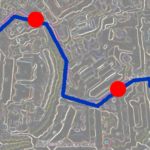We discuss the following topics in this blog:
- Does the Rise of IoT Mean More Cybersecurity Threats?
- Why India Needs Concrete Cyber Security Measures?
In addition to these topics, we shall also be answering the following FAQs:
- What is WiFi?
- What is an Optical Fibre Cable?
Contents
Does the Rise of IoT Mean More Cybersecurity Threats?
This is the age of the Internet of Things (IoT) which increases the connectivity of everything, everyone, everywhere. And India is building a vibrant IoT ecosystem that is changing the way things are done.
According to Nasscom, the IoT market in India is poised to reach USD 15 billion by 2020, accounting for nearly 5 percent of the total global market. IoT will make a huge impact on four main segments: lifestyle/ wearables, embedded computing, industrial internet and connected homes.
Today there are over 120 IoT firms in India that hold the capability to drive an IoT revolution in the country and bring a huge impact in sectors like industrial manufacturing, energy, agriculture, utilities, transport, and logistics. Smart Cities is the future where seamless communication will be the key not only amongst humans but between machines and machines to humans.
Furthermore, cloud computing and analytics is improving decision making and data analysis capabilities and bringing in an evolution in the way industries will function in future.
However, everything comes at a price. And the price of IoT evolution is cyber security. While IoT aims to connect billions of devices, targeted attack groups are increasingly focusing on IoT based ecosystem as a soft entry point to destroy devices, steal credentials and data, and intercept organisations classified communications.
According to a report by Indian digital services firm Subex, India ranked highest globally in IoT cybersecurity attacks in Q2 2019 with 22 percent rise in attacks on IoT deployments in the country.
Reportedly, there is a high level of hacker interest in Indian projects and a large number of sophisticated and unique malwares are being deployed by hackers in the Indian IoT landscape. Smart cities, financial services, transportation and critical infrastructure projects are high on the radar of cyberattacks as IoT projects are being targeted right from the proof of concept stage.
According to reports, cybercrime damages will cost the world $6 trillion annually by 2021 and India stands at the most vulnerable spot placing the nation’s security, economy, and public safety at high risk.
Why India Needs Concrete Cyber Security Measures?
Concrete cyber security measures are the need of the hour and these solutions need to be in sync with IoT deployments right from its inception. There is a need to have an ecosystem of cyber security solutions which is both multi-layered and multi-faceted. This would plug every possible entry point and secure organisation’s assets and credibility.
IoT has certainly brought in myriad of opportunities for organisational growth. But greater connectivity has also opened organisations to vulnerabilities. It is important to understand the scope of security risks and wisely choose cyber security solutions that can embrace the unique connectivity in every organisational process and put a holistic, multi-layered, cyber guard in place.
FAQs
What is WiFi?
Put simply, WiFi is a technology that uses radio waves to create a wireless network through which devices like mobile phones, computers, printers, etc., connect to the internet. A wireless router is needed to establish a WiFi hotspot that people in its vicinity may use to access internet services. You’re sure to have encountered such a WiFi hotspot in houses, offices, restaurants, etc.
To get a little more technical, WiFi works by enabling a Wireless Local Area Network or WLAN that allows devices connected to it to exchange signals with the internet via a router. The frequencies of these signals are either 2.4 GHz or 5 GHz bandwidths. These frequencies are much higher than those transmitted to or by radios, mobile phones, and televisions since WiFi signals need to carry significantly higher amounts of data. The networking standards are variants of 802.11, of which there are several (802.11a, 802.11b, 801.11g, etc.).
What is an Optical Fibre Cable?
An optical fibre cable is a cable type that has a few to hundreds of optical fibres bundled together within a protective plastic coating. They help carry digital data in the form of light pulses across large distances at faster speeds. For this, they need to be installed or deployed either underground or aerially. Standalone fibres cannot be buried or hanged so fibres are bunched together as cables for the transmission of data.
This is done to protect the fibre from stress, moisture, temperature changes and other externalities. There are three main components of a optical fibre cable, core (It carries the light and is made of pure silicon dioxide (SiO2) with dopants such as germania, phosphorous pentoxide, or alumina to raise the refractive index; Typical glass cores range from as small as 3.7um up to 200um), Cladding (Cladding surrounds the core and has a lower refractive index than the core, it is also made from the same material as the core; 1% refractive index difference is maintained between the core and cladding; Two commonly used diameters are 125µm and 140µm) and Coating (Protective layer that absorbs shocks, physical damage and moisture; The outside diameter of the coating is typically either 250µm or 500µm; Commonly used material for coatings are acrylate,Silicone, carbon, and polyimide).
An optical fibre cable is made up of the following components: Optical fibres – ranging from one to many. Buffer tubes (with different settings), for protection and cushioning of the fibre. Water protection in the tubes – wet or dry. A central strength member (CSM) is the backbone of all cables. Armoured tapes for stranding to bunch the buffer tubes and strength members together. Sheathing or final covering to provide further protection.
The five main reasons that make this technology innovation disruptive are fast communication speed, infinite bandwidth & capacity, low interference, high tensile strength and secure communication. The major usescases of optical fibre cables include intenet connectivity, computer networking, surgery & dentistry, automotive industry, telephony, lighting & decorations, mechanical inspections, cable television, military applications and space.
FAQs
What is WiFi?
Put simply, WiFi is a technology that uses radio waves to create a wireless network through which devices like mobile phones, computers, printers, etc., connect to the internet. A wireless router is needed to establish a WiFi hotspot that people in its vicinity may use to access internet services. You’re sure to have encountered such a WiFi hotspot in houses, offices, restaurants, etc.
To get a little more technical, WiFi works by enabling a Wireless Local Area Network or WLAN that allows devices connected to it to exchange signals with the internet via a router. The frequencies of these signals are either 2.4 GHz or 5 GHz bandwidths. These frequencies are much higher than those transmitted to or by radios, mobile phones, and televisions since WiFi signals need to carry significantly higher amounts of data. The networking standards are variants of 802.11, of which there are several (802.11a, 802.11b, 801.11g, etc.).
What is an Optical Fibre Cable?
An optical fibre cable is a cable type that has a few to hundreds of optical fibres bundled together within a protective plastic coating. They help carry digital data in the form of light pulses across large distances at faster speeds. For this, they need to be installed or deployed either underground or aerially. Standalone fibres cannot be buried or hanged so fibres are bunched together as cables for the transmission of data. This is done to protect the fibre from stress, moisture, temperature changes and other externalities. There are three main components of a optical fibre cable, core (It carries the light and is made of pure silicon dioxide (SiO2) with dopants such as germania, phosphorous pentoxide, or alumina to raise the refractive index; Typical glass cores range from as small as 3.7um up to 200um), Cladding (Cladding surrounds the core and has a lower refractive index than the core, it is also made from the same material as the core; 1% refractive index difference is maintained between the core and cladding; Two commonly used diameters are 125µm and 140µm) and Coating (Protective layer that absorbs shocks, physical damage and moisture; The outside diameter of the coating is typically either 250µm or 500µm; Commonly used material for coatings are acrylate,Silicone, carbon, and polyimide).
An optical fibre cable is made up of the following components: Optical fibres – ranging from one to many. Buffer tubes (with different settings), for protection and cushioning of the fibre. Water protection in the tubes – wet or dry. A central strength member (CSM) is the backbone of all cables. Armoured tapes for stranding to bunch the buffer tubes and strength members together. Sheathing or final covering to provide further protection.
The five main reasons that make this technology innovation disruptive are fast communication speed, infinite bandwidth & capacity, low interference, high tensile strength and secure communication. The major usescases of optical fibre cables include intenet connectivity, computer networking, surgery & dentistry, automotive industry, telephony, lighting & decorations, mechanical inspections, cable television, military applications and space.













